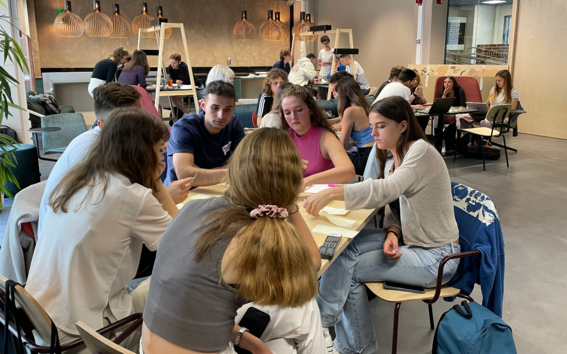What does it take to build a Blended Intensive Programme?

The three-week course included remote studying and one week on the Aalto University campus for lectures, workshops and prototyping. This summer school was a so called Blended Intensive Programme (BIP), which is a course that combines physical and virtual learning. A BIP is organized by three different higher education institutions from three different Erasmus+ programme countries and funded by the Erasmus+ mobility programme. We talked to program manager Marcela Acosta at Aalto University Summer Schools on what’s it like to build BIPs.
How did you start planning for the Unite! BIP course, what were the first steps?
I started planning for this BIP course as part of my work in the summer school back in September 2022. First I needed to find a suitable topic and teacher. I tend to choose the topics based on the availability of professors, and on what seems to be attractive for students, or sometimes based on World Economic Forum’s recommendations. After choosing the topic design thinking and product development for the Unite! Summer school I had to get the international partners. At least three universities must participate in order to get the funding, so I reached out to my Unite! colleagues in the partner universities, and they helped me get some enthusiastic lecturers from abroad.

How much funding did you have and how was it used?
For organizing a course, you can get 6000-8000 Euros depending on the number of mobile participants. To receive the maximum of 8000 Euros requires a minimum of 20 mobile participants i.e. students, staff or teachers. The mobile participants need to apply Erasmus+ mobility grant from their own university to cover the travel cost. The BIP funding is only for the costs of organizing the course. We used the funding for lecturers, social activities such as excursions and catering, as well as for materials used during the course. Most of the budget normally goes to lecturers.
What was the schedule for the course?
The course was, in total, three weeks, but only one intensive week in Finland. The other two weeks there were online lectures and assignments for preparation and final presentation. To receive the BIP funding the physical learning component must be min. 5 days (and max. 30 days).
How would you encourage other Unite! colleagues to start planning for a BIP? What are the advantages?
I would encourage interested lecturers to think of a topic that might be attractive to international students, and in which online elements can be integrated (this is mandatory for the funding). The course can be 1-4 weeks in length and must give at least three credits. Students have given us feedback that some preparatory online group work was very helpful, as it allowed them to connect to each other before arriving to Finland. Some friendly faces in the place you’re traveling to are very appreciated.
You should also include your international relations office and the Erasmus coordinator. This sort of course works well for summer/winter courses, multidisciplinary topics, or just, to try some innovative teaching.
What kind of feedback did you receive from the participants?
The feedback was overall good. The students enjoyed the Finnish experience and the social programme as well as the academics, and for many of them, it was a good opportunity to try an international experience without having to leave their country for too long. Many of them made international connections and I’m sure are keeping in contact.
Erasmus+ Blended Intensive Programmes (BIP)
Erasmus+mobility programme (2021–2027) offers a new, more flexible way for student and staff mobilities.

Read more news
Growing Materials, Growing Ideas: Inside the BioMaker Studio
At Aalto University’s BioMaker Studio, initiated by Ena Naito, students and researchers experiment with living materials, from algae to mycelium, creating an open, interdisciplinary space where design, biology, and collaboration grow together.
The year in Review: What happened in 2025?
A recap of the milestones of the Master in Contemporary Design in 2025
“This hands-on approach is the absolute best way to learn” – Loyola University and Aalto University partnered for the sixth time
Isabel Towghi shares her experience from Aalto University Summer School.






